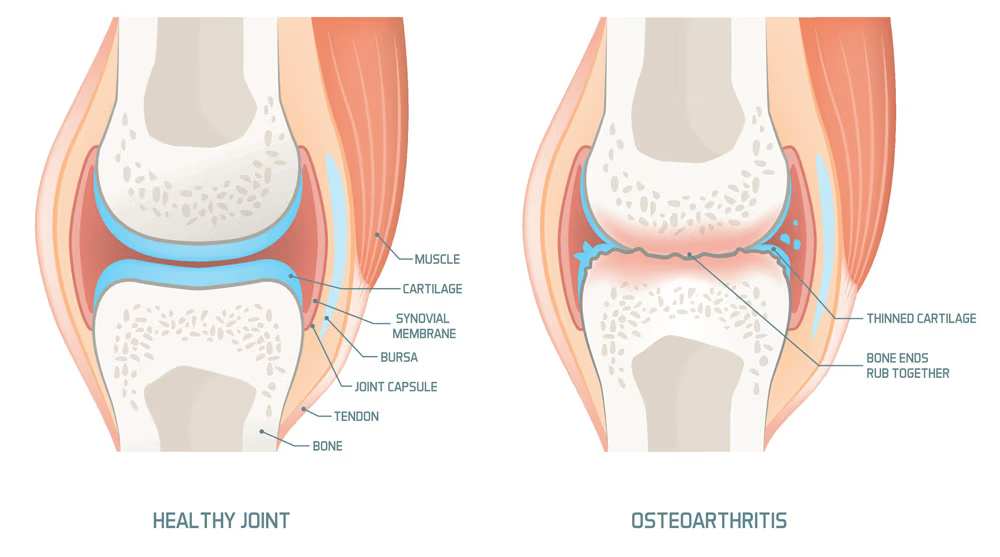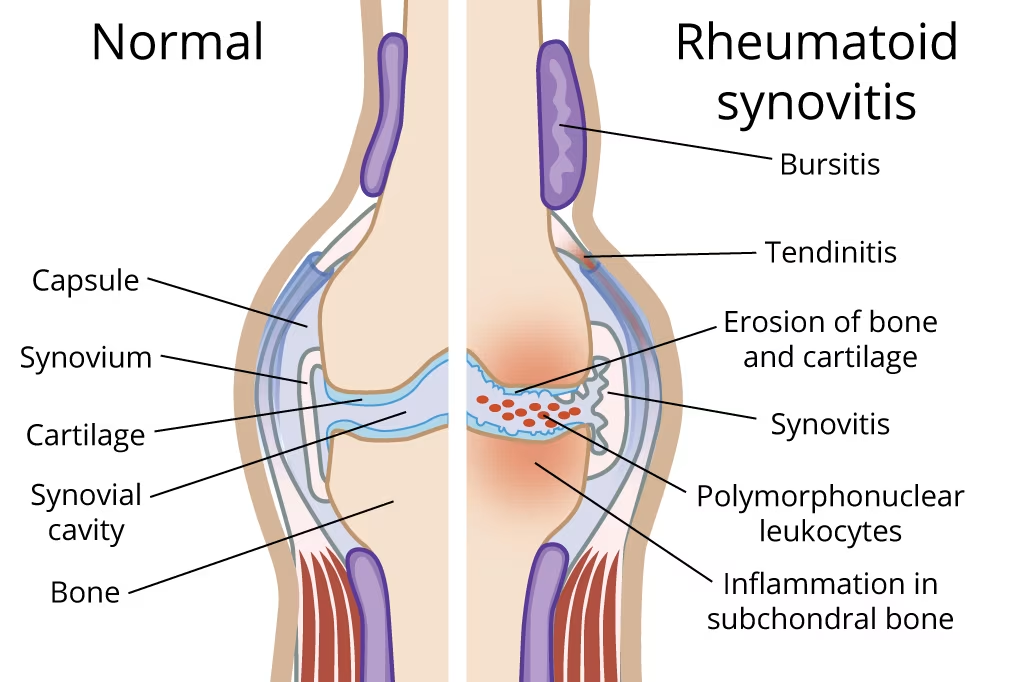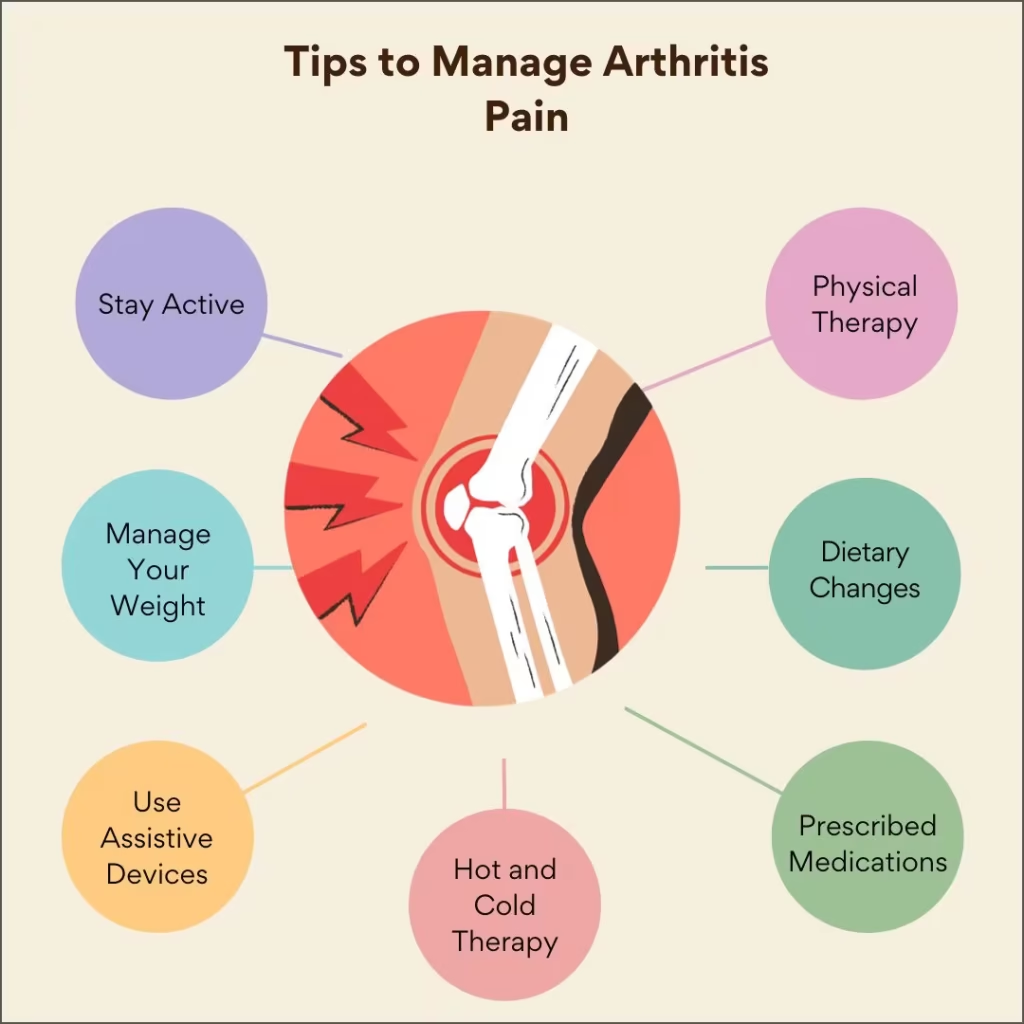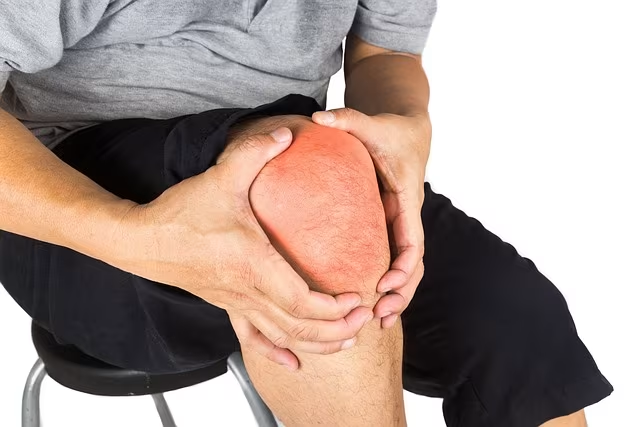Arthritis is a complex condition characterized by inflammation of one or multiple joints, causing pain, stiffness, and decreased mobility.
Contrary to popular belief, arthritis isn’t a single disease—it encompasses over 100 different types, each with unique causes and treatments.
In Singapore, arthritis is among the top five causes of disability, affecting people of all age groups, though it’s more common among older adults.
This comprehensive guide provides essential information about arthritis, from its causes and symptoms to diagnosis and available treatment options in Singapore.
Read more: Best Orthopedic Doctor in JB for Singaporeans
What is Arthritis?
Arthritis refers to the inflammation of joints in the body. This inflammation leads to pain, stiffness, swelling, and reduced mobility.
While arthritis can affect any joint in the body, it most commonly targets weight-bearing joints such as the knees, hips, spine, and feet, as well as frequently used joints like those in the hands.
In Singapore, arthritis is highly prevalent among the elderly population, with independent studies showing that as many as 40% of elderly individuals have suffered from knee pain for more than five years.
Alarmingly, only half of these arthritis sufferers consult a doctor for treatment, leaving this potentially debilitating condition unaddressed.
You might like: Total Knee Replacement Surgery in Singapore
Types of Arthritis
Of the more than 100 different types of arthritis that affect people worldwide, the two most common forms encountered in Singapore’s healthcare system are osteoarthritis and rheumatoid arthritis, each with distinct characteristics, causes, and treatment approaches.
Osteoarthritis (OA)

Osteoarthritis is characterized by the progressive deterioration of cartilage, the smooth, protective tissue that cushions the joints and allows for pain-free movement.
As this essential protective tissue gradually wears away over time, the underlying bones begin to rub directly against each other, causing significant pain, stiffness, and limited mobility that can severely impact daily activities and quality of life.
This type of arthritis typically develops due to several contributing factors, including age-related wear and tear that naturally occurs as the body ages and joints experience decades of use.
Previous joint injuries, whether from sports activities, accidents, or occupational hazards, can create areas of weakness that predispose joints to developing osteoarthritis later in life.
Excessive pressure on joints, often resulting from obesity or repetitive stress from certain occupations or activities, accelerates cartilage breakdown and increases the risk of developing the condition.
Structural abnormalities present from birth or developed over time can create uneven pressure distribution within joints, leading to premature cartilage deterioration in specific areas.
Osteoarthritis most commonly affects weight-bearing joints such as the knees and hips, as well as the spine, which bears significant mechanical stress throughout daily activities.
While osteoarthritis is more prevalent among adults over 50 years of age, Singapore has observed that increasingly active lifestyles and participation in high-impact sports have led to earlier onset of the condition in some younger individuals, particularly those involved in intensive athletic activities or physically demanding occupations.
Read more: Osteoarthritis Treatment in Singapore: Symptoms, Prevention
Rheumatoid Arthritis (RA)

Rheumatoid arthritis represents a fundamentally different type of arthritis, classified as an autoimmune disorder where the body’s immune system mistakenly identifies joint tissues as foreign invaders and launches an attack against them.
This immune system dysfunction causes chronic inflammation and progressive joint damage that can significantly impact multiple body systems.
In Singapore, rheumatoid arthritis is recognized as the most common chronic inflammatory arthritis, primarily affecting individuals between 40 and 60 years of age, though it can develop at any age.
The condition shows a notable preference for affecting women more frequently than men, with approximately three times higher prevalence in females.
Unlike osteoarthritis, which results from mechanical wear and physical deterioration of joint structures, rheumatoid arthritis stems from immune system dysfunction and inflammatory processes that attack healthy joint tissues.
The condition often affects multiple joints symmetrically, meaning that if one hand or knee is affected, the corresponding joint on the opposite side of the body typically develops similar symptoms.
Rheumatoid arthritis extends beyond joint involvement and can damage other body systems, including the cardiovascular system, lungs, eyes, and skin, making it a systemic condition rather than one limited to joints alone.
Patients frequently experience systemic symptoms such as persistent fatigue, low-grade fever, and general feelings of illness that reflect the body-wide inflammatory process characteristic of this autoimmune condition.
This might help: Sports Doctors in Singapore: Guide to Finding a Suitable Specialist
Other Forms of Arthritis
- Gout: Caused by elevated uric acid levels, leading to crystal formation in joints
- Psoriatic arthritis: Affects people with psoriasis
- Ankylosing spondylitis: Primarily affects the spine
- Lupus: An autoimmune condition that can cause joint inflammation
- Septic arthritis: Caused by bacterial, fungal, or viral infections
Causes of Arthritis
The causes of arthritis vary depending on the type, but generally include:
Hereditary Factors
Having a close relative with arthritis can increase your risk of developing the condition.
Family genetics play a significant role in both osteoarthritis and rheumatoid arthritis.
If a parent or sibling has arthritis, an individual’s genes may be more susceptible to environmental factors that trigger the condition.
Environmental Factors
Exposure to certain chemicals, toxins, or repetitive physical stressors can increase the risk of developing arthritis or worsen existing conditions.
Infections
Some types of arthritis, such as septic joint inflammation, result from bacterial, fungal, or viral infections.
These infections can cause deterioration of cartilage and joint tissues, leading to pain and inflammation.
Related article: Neck Pain in Singapore: Causes, Treatments, Prevention
Previous Injuries
Previous joint injuries significantly increase the risk of developing arthritis later in life. The compromised integrity of the joint makes it more susceptible to wear and tear, accelerating the onset of arthritis.
Metabolic Disorders
Conditions like gout result from metabolic issues that cause elevated uric acid levels in the blood, leading to crystal formation in joints, swelling, and tenderness.
Autoimmune Responses
In conditions like rheumatoid arthritis and lupus, the body’s immune system erroneously attacks joint tissues, resulting in inflammation, pain, and joint damage.
Read more: Knee Pain in Singapore: Causes, Treatment & Prevention
Risk Factors for Arthritis
Understanding risk factors is crucial for prevention and early intervention. These factors can be categorized as modifiable (those you can control) and non-modifiable (those you cannot control).
Modifiable Risk Factors
Diet
Poor dietary choices can lead to obesity or metabolic complications like gout. A diet high in processed foods, sugar, and certain meats may increase inflammation in the body.
Physical Inactivity
A sedentary lifestyle contributes to muscle weakness, weight gain, and metabolic disorders, all of which may increase arthritis risk.
Weight
Being overweight or obese places excessive pressure on weight-bearing joints, particularly the knees and hips, accelerating cartilage breakdown and increasing the risk of osteoarthritis.
Occupation
Jobs that involve repetitive movements, heavy lifting, or prolonged periods of standing can strain joints and increase the risk of developing arthritis.
Smoking
Tobacco use increases the risk of developing rheumatoid arthritis and can worsen its symptoms, as well as those of other inflammatory conditions like lupus.
You might be interested: Hip Replacement Surgery in Singapore: Cost, Risks
Non-Modifiable Risk Factors
Age
The risk of arthritis increases significantly with age, with the primary age group being 40 to 60 years old.
Gender
Women are more likely to develop rheumatoid arthritis than men, whereas men are more susceptible to conditions like gout, lupus, and ankylosing spondylitis.
Genetics
A close genetic link to someone with arthritis can make an individual more likely to develop the condition.
Symptoms of Arthritis
While symptoms vary based on the type and severity of arthritis, common signs include:
- Joint pain: Persistent discomfort that may worsen with activity
- Joint stiffness: Particularly noticeable after periods of inactivity or upon waking
- Joint swelling: Visible enlargement and inflammation
- Redness around joints: Indication of active inflammation
- Tenderness: Pain when pressure is applied to the affected area
- Warmth: Affected joints may feel warm to the touch
- Limited movement: Decreased range of motion and flexibility
- Limping: Altered gait due to pain and stiffness
- Locking of joints: Temporary immobility of the affected joint
- Weakness: Reduced strength in muscles surrounding the joint
Symptoms are typically worse in the morning upon waking or after periods of inactivity.
In some cases, arthritis may also cause systemic symptoms like fever, swollen lymph nodes, weight loss, and general malaise.
How is Arthritis Diagnosed?
Accurate diagnosis is essential for effective treatment. In Singapore, healthcare providers typically employ a combination of methods:
Physical Examination
During the initial consultation for suspected arthritis, a doctor or rheumatologist will conduct a comprehensive physical examination to assess the extent and impact of joint involvement.
The healthcare provider will carefully examine the affected joints for signs of fluid accumulation, warmth indicating inflammation, tenderness to touch, and any limitations in normal range of motion.
The assessment includes evaluating your ability to perform routine daily activities, which helps determine the functional impact of arthritis on your quality of life.
Healthcare providers will also evaluate your gait and posture to identify compensatory movement patterns or structural changes that may have developed due to joint pain or stiffness.
A thorough review of your medical history and current symptoms provides essential context for diagnosis and treatment planning.
Laboratory Tests
Various tests may be conducted to identify the type of arthritis:
- Blood tests: To check for inflammatory markers, rheumatoid factor, or other antibodies
- Joint fluid analysis: Fluid drawn from affected joints can help determine the cause of inflammation
- Urine tests: May detect certain byproducts that contribute to gout
Imaging Tests
- X-rays: Show the severity of damage to bones and cartilage
- Computerized Tomography (CT) scan: Provides detailed images of bones and soft tissues from multiple angles
- Magnetic Resonance Imaging (MRI): Offers detailed views of cartilage, ligaments, and tendons
- Ultrasound: Can visualize soft tissues, cartilage, and inflammation
- Bone scan: Used to detect fractures, cancer, infections, and other abnormalities
Based on these diagnostic procedures, healthcare providers can identify the specific type of arthritis and develop a personalized treatment plan.
Treatment Options for Arthritis in Singapore
While arthritis cannot be cured, various treatments can effectively manage symptoms, slow disease progression, and improve quality of life. In Singapore, treatment typically follows a multi-faceted approach:
Non-Surgical Treatments
Medications
Depending on the type and severity of arthritis, doctors may prescribe:
- Analgesics: For pain management (e.g., acetaminophen/Tylenol)
- Nonsteroidal Anti-inflammatory Drugs (NSAIDs): To reduce pain and inflammation (e.g., ibuprofen, naproxen)
- Counterirritants: Topical creams containing ingredients like capsaicin or menthol that interfere with pain signal transmission
- Disease-modifying Antirheumatic Drugs (DMARDs): For rheumatoid arthritis, these medications slow or stop the immune system from attacking joints
- Biologic Response Modifiers: Often used with DMARDs for rheumatoid arthritis
- Corticosteroids: Reduce inflammation and suppress immune response
Physical Therapy
Working with a qualified physiotherapist provides multiple benefits for arthritis management through targeted interventions designed to address specific functional limitations.
Physical therapy can improve joint mobility and flexibility through carefully designed exercise programs that maintain or restore normal range of motion.
Strengthening exercises focus on muscles surrounding affected joints, providing better support and stability to reduce stress on damaged joint structures.
Physiotherapists also provide specialized pain relief techniques, including manual therapy, therapeutic modalities, and movement strategies that can reduce discomfort during daily activities.
Additionally, they teach proper body mechanics and movement patterns that help reduce joint stress and prevent further damage during routine tasks.
Occupational Therapy
Occupational therapists play a crucial role in helping patients adapt their daily routines to accommodate arthritis limitations while maintaining independence and productivity.
They work with patients to modify daily activities in ways that reduce joint strain and minimize pain during essential tasks like cooking, cleaning, and personal care.
Occupational therapists can recommend appropriate assistive devices that make daily tasks easier and safer to perform.
They provide valuable ergonomic modifications for both home and workplace environments, ensuring that furniture, equipment, and workstations are optimally arranged to reduce joint stress.
Energy conservation techniques help patients accomplish necessary activities while managing fatigue and preserving joint function.
Lifestyle Modifications
- Weight management: Losing excess weight reduces pressure on weight-bearing joints
- Exercise: Low-impact activities like swimming, cycling, or tai chi help maintain joint flexibility and strengthen supporting muscles
- Nutrition: Anti-inflammatory diets rich in fruits, vegetables, omega-3 fatty acids, and antioxidants may help reduce inflammation
- Joint protection: Learning proper techniques for lifting, carrying, and performing daily activities
Alternative Therapies
While scientific evidence varies, some people find relief from:
- Acupuncture
- Massage therapy
- Yoga and tai chi
- Nutritional supplements (e.g., glucosamine, chondroitin)
It’s important to consult with healthcare providers before trying alternative therapies to ensure they won’t interfere with conventional treatments.
Surgical Treatments
When non-surgical treatments fail to provide adequate relief, surgical intervention may be necessary:
Joint Repair
Typically performed arthroscopically, this procedure involves smoothing or realigning damaged joint surfaces to improve function and reduce pain.
Joint Replacement
This common procedure, used primarily for knees and hips, involves removing the damaged joint and replacing it with an artificial prosthesis made of metal, plastic, or ceramic.
Joint Fusion
In cases where joint replacement isn’t suitable, fusion surgery may stabilize and immobilize severely damaged joints, particularly in cases of inflammatory arthritis or joint deformity.
Managing Arthritis at Home

Beyond medical treatments, self-care strategies can significantly improve quality of life for arthritis sufferers:
Regular Exercise
Though it may seem counterintuitive to exercise when joints are painful, physical activity represents one of the most effective ways to manage arthritis symptoms and maintain function.
Regular exercise provides multiple benefits including reduced joint pain and stiffness, increased strength and flexibility, improved range of motion, enhanced mood and energy levels, and better sleep quality.
The key is focusing on low-impact activities that provide therapeutic benefits without placing excessive stress on affected joints.
Excellent options include swimming and water aerobics, which provide resistance training while reducing joint loading, cycling, which strengthens leg muscles without impact stress, walking at a comfortable pace, and gentle yoga or tai chi, which combine flexibility, strength, and mindfulness components.
Healthy Diet
Nutrition plays a vital role in managing arthritis by supporting overall health and potentially reducing inflammation.
Patients should maintain a balanced diet rich in fruits, vegetables, whole grains, and lean proteins that provide essential nutrients for tissue health and repair.
Including anti-inflammatory foods such as fatty fish rich in omega-3 fatty acids, nuts, olive oil, and berries may help reduce systemic inflammation.
Limiting processed foods, added sugars, and saturated fats can help minimize inflammatory responses in the body. Staying adequately hydrated supports joint lubrication and overall health.
Many healthcare providers recommend Mediterranean-style eating patterns, which have demonstrated benefits for inflammatory conditions through research studies.
Weight Management
Excess body weight places additional mechanical stress on joints, particularly weight-bearing joints in the knees, hips, and lower back.
Losing even a modest amount of weight, just a few kilograms, can significantly reduce pain levels and improve joint function by decreasing the load that joints must bear during daily activities.
Proper Sleep
Quality sleep allows joints to rest and recover from daily stresses while supporting the body’s natural healing processes.
Establishing good sleep habits includes maintaining a regular sleep schedule that promotes consistent rest patterns, creating a comfortable sleep environment with appropriate temperature and lighting, using supportive pillows and mattresses that maintain proper spinal alignment, and practicing relaxation techniques before bedtime to reduce stress and promote restful sleep.
Hot and Cold Therapy
Therapeutic temperature applications can provide significant symptom relief when used appropriately.
Heat therapy, including warm towels, heating pads, or warm baths, helps relax muscles and increase blood flow to affected areas, which can reduce stiffness and improve mobility.
Cold packs help reduce inflammation and provide numbing effects that decrease pain perception.
Many patients find that alternating between hot and cold treatments provides optimal relief, though the specific approach should be tailored to individual preferences and response patterns.
Assistive Devices
Various tools and devices can help reduce joint strain while maintaining independence and safety during daily activities.
Mobility aids such as canes, walkers, or crutches can reduce weight-bearing stress on affected joints.
Braces or splints provide additional support and stability for specific joints during activities.
Ergonomic kitchen utensils with built-up handles reduce grip strain, while grab bars and handrails provide stability and support in bathrooms and stairways.
Raised toilet seats make transfers easier and less stressful for hip and knee joints.
Long-handled reachers allow individuals to access items without excessive bending or stretching that might stress affected joints.
Arthritis Prevention Strategies
While not all cases of arthritis can be prevented, particularly those with strong genetic components, certain lifestyle choices can reduce overall risk and potentially delay the onset of symptoms.
Joint Protection
Using proper body mechanics when lifting or carrying objects helps distribute forces evenly and reduces stress on individual joints.
Avoiding repetitive movements that place excessive stress on joints, particularly when possible through job modifications or activity adaptations, can prevent cumulative damage over time.
Taking regular breaks during activities that require sustained joint use allows tissues to recover and prevents overuse injuries.
Maintaining good posture during sitting, standing, and walking activities ensures optimal joint alignment and reduces uneven stress distribution that can contribute to premature joint deterioration.
Regular Exercise
Strengthen the muscles around joints and maintain flexibility through regular, appropriate exercise.
Weight Control
Maintain a healthy weight to reduce pressure on weight-bearing joints.
Balanced Diet
Consume a variety of nutrients to support joint health and control inflammation.
Prompt Treatment of Injuries
Seek proper medical care for joint injuries to prevent long-term damage that could lead to arthritis.
Regular Check-ups
Schedule regular medical examinations to detect and address potential joint problems early.
Healthcare Resources in Singapore
Singapore offers excellent healthcare resources for arthritis patients:
Medical Specialists
- Rheumatologists: Specialize in diagnosing and treating arthritis and other musculoskeletal conditions
- Orthopedic Surgeons: Perform surgical interventions for severe arthritis
- Physiotherapists: Provide exercise therapy and pain management strategies
- Occupational Therapists: Help adapt daily activities and environments
Healthcare Facilities
Singapore has numerous public and private healthcare institutions offering comprehensive arthritis care, including:
- Public hospitals and polyclinics
- Specialist outpatient clinics
- Private rheumatology and orthopedic practices
- Rehabilitation centers
Support Services
Various organizations provide support, education, and resources for arthritis patients:
- Singapore Arthritis Association
- Patient support groups
- Community rehabilitation services
- Home care services
Frequently Asked Questions
Is arthritis only a disease of the elderly?
No, arthritis can affect people of all ages, including children and young adults.
While it is more common among older individuals, certain types like juvenile idiopathic arthritis specifically affect children.
In Singapore, rheumatoid arthritis most commonly affects people between 40 and 60 years old.
Can arthritis be cured?
Unfortunately, there is currently no cure for most types of arthritis.
However, effective treatments can manage symptoms, slow disease progression, and improve quality of life.
Treatment approaches focus on pain management, preserving joint function, and preventing further damage.
Which doctor should I see for arthritis in Singapore?
For initial assessment, you can consult a general practitioner or visit a polyclinic.
If needed, they will refer you to a specialist. Rheumatologists specialize in diagnosing and treating arthritis and other musculoskeletal conditions, while orthopedic surgeons may be consulted for surgical interventions.
How effective is surgery for arthritis?
Surgical interventions can be highly effective for severe arthritis that doesn’t respond to conservative treatments.
However, surgery is typically considered only after non-surgical options have been exhausted.
Can diet affect arthritis symptoms?
Yes, diet can influence arthritis symptoms, particularly in inflammatory types like rheumatoid arthritis and gout.
Anti-inflammatory foods (fatty fish, olive oil, nuts, fruits, and vegetables) may help reduce inflammation, while processed foods, sugar, and certain meats might exacerbate symptoms.
For gout specifically, limiting purine-rich foods can help prevent flare-ups.
Is exercise good for arthritis?
Despite common misconceptions, appropriate exercise is one of the best treatments for arthritis.
Regular, low-impact activities strengthen muscles supporting affected joints, improve flexibility, reduce pain, and enhance overall function.
Working with a physiotherapist to develop a safe, effective exercise program is recommended.
Can weather changes affect arthritis?
Many people with arthritis report that their symptoms worsen during cold, damp weather or when barometric pressure changes.
While scientific evidence is mixed, these experiences are valid. Some individuals find relief by keeping joints warm, staying active, and adjusting medications during weather changes.
What role does weight play in arthritis?
Excess weight significantly impacts arthritis, particularly in weight-bearing joints like knees and hips.
Each additional kilogram of body weight adds about 4 kilograms of pressure to the knees when walking.
Losing even a moderate amount of weight can substantially reduce pain and slow disease progression in weight-bearing joints.
Are there any new treatments for arthritis in Singapore?
Singapore stays at the forefront of arthritis treatment innovations.
Recent advances include targeted biologic therapies, regenerative medicine approaches like platelet-rich plasma (PRP) and stem cell therapies, and minimally invasive surgical techniques.
Research continues in areas like immunotherapy and personalized medicine approaches.
Can arthritis affect internal organs?
Some types of arthritis, particularly autoimmune forms like rheumatoid arthritis and lupus, can affect systems beyond the joints.
These conditions may impact the heart, lungs, eyes, skin, and other organs.
This highlights the importance of comprehensive care and monitoring for people with inflammatory arthritis.
How can I prevent arthritis?
While not all arthritis can be prevented, you can reduce your risk by maintaining a healthy weight, protecting joints during physical activities, eating a balanced diet rich in anti-inflammatory foods, staying physically active with joint-friendly exercises, and promptly treating joint injuries to prevent long-term damage.
What is the cost of arthritis treatment in Singapore?
Treatment costs vary widely depending on the type of arthritis, treatment approach, and whether you seek care at public or private facilities.
Singaporeans and Permanent Residents can utilize subsidies, MediSave, MediShield Life, and other assistance programs to help with medical expenses.
For specific cost information, consult healthcare providers or financial counselors at medical facilities.
Conclusion
Arthritis presents significant challenges, but with proper diagnosis, treatment, and self-management strategies, most individuals can maintain an active, fulfilling lifestyle.
Singapore offers comprehensive healthcare resources for arthritis patients, from specialized medical care to community support services.
If you experience persistent joint pain, stiffness, or swelling, consult a healthcare provider promptly.
Early intervention can significantly improve outcomes and prevent further joint damage.
Remember that while arthritis is a chronic condition, it doesn’t have to define your life—with the right approach, you can effectively manage symptoms and maintain your independence and quality of life.

